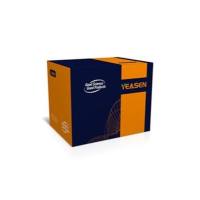Ovariectomy and Estrogen Replacement in Rodents
互联网
320
Estrogen is known to be one of the major hormonal influences in bone remodeling and bone mass. Estrogen deficiency after the menopause is one of the leading causes of osteoporosis, and currently estrogen replacement is the first line management for postmenopausal osteoporosis. The bone loss associated with estrogen deficiency is due to increased bone resorption and a relative deficiency in bone formation. Although estrogen is thought to prevent bone loss mainly by suppressing bone resorption (1 ,2 ), there is also recent evidence to suggest that estrogen may exert an anabolic effect in bone in humans (3 ,4 ). Estrogen receptors (ER) are present in osteoblasts (5 ), and oestradiol has been shown to increase type I collagen and alkaline phosphatase production by osteoblasts in vitro (6 ). Animal models have proved invaluable in the study of the role of estrogen in bone metabolism. There is a large body of evidence that the cancellous bone of the secondary spongiosa of adult female rats has characteristics similar to that of humans. The secondary spongiosa undergoes bone remodeling and becomes osteopenic with disuse and estrogen deficiency. Ovariectomy induces increased bone resorption that in turn entrains increased bone formation. Resorption, formation and bone loss are all suppressed by estrogen, calcitonin, and bisphosphonates. Preliminary in vivo studies in the evaluation of new compounds directed at the estrogen receptor are generally performed in rats.








